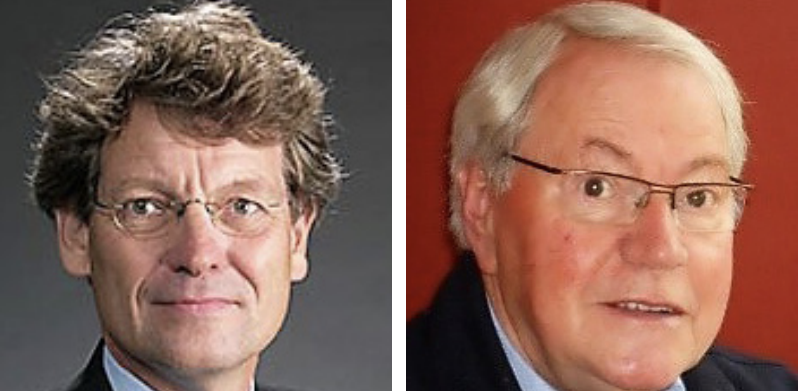Well Stimulation Workshop: Practical and Applied

DISCIPLINE: Engineering, Unconventional Reservoirs
COURSE LENGTH: 5 Half-Day Sessions (Live Online)
CEUS: 2.0
AVAILABILITY: In-House & Live Online
ATTEND AN UPCOMING CLASS:
Check back in periodically for updated Public and Live Online course dates! To schedule an In-House course, contact SCA’s Training Department at training@scacompanies.com.
WHO SHOULD ATTEND: Senior technologists and middle management, those involved in development planning, economics and production operations, production chemists, well stimulation specialists and well completions design engineers, in conventional as well as unconventional plays including shale gas, coal bed methane, etc. This includes completion, production, reservoir and drilling engineers; economists, asset managers and geologists.
COURSE DESCRIPTION: In the drive towards more technically challenging completions and the development of unconventional reservoirs, not enough attention is paid to the details of inflow performance optimization. This can result in poor or less than optimum production. Asset managers, advisors and engineers involved in the planning, execution, and evaluation of well completions need to have the background in what is possible using modern well stimulation techniques and tools.
This course is designed for those involved in all aspects of inflow performance and well completion/outflow design, and has the emphasis on well stimulation. Obviously, to be able to make decisions it is important to understand the characteristics of the “drainage volume” in relation to the well paths. Candidate selection is therefore key and time will be spent discussing candidate selection strategies, how that will affect the inflow performance and consequently, the stimulation design. The course includes acidizing and fracturing design, quality control, conducting the treatment, analyzing pressures and other critical parameters, during and after the treatment.
Participants are encouraged to bring their own cases. The aim is that the time is spent both on lecturing and students working on case studies divided into teams to evaluate and design stimulation treatments. Each topic is introduced by a concise lecture followed by one or two exercises. The course concludes with a comprehensive exercise in which the students, with the aid of acidizing and hydraulic fracturing simulators, will:
- Select candidates from group of wells
- Make a proposal for the selection of a treatment for each candidate
- Design of the selected treatment
- Make a comparison with alternative treatment(s)
Participants with a field or a cluster of wells for which they want to select candidates and to design treatments, are encouraged to bring those along. The format is informal. Students are encouraged to ask questions, make comments, etc.
LEARNING OUTCOMES:
- Identify the best and most economical method to enhance and optimize inflow performance in the various completion configurations and formation types
- Understand formation damage causes and remediation
- Select candidates for acidizing treatments
- Select candidates for hydraulic fracturing treatments, both propped and acid fracturing
- Understand the design and execution of and evaluate acidizing treatments
- Understand the design and execution of and evaluate hydraulic fracturing treatments
- Understand and work with acidizing and hydraulic fracturing simulators
- Understand the nature and environmental impact of fluids used in production enhancement treatments to develop a disposal strategy
COURSE CONTENT:
Day 1
- Development options, formation characteristics vs conduit type
- When considering the development of an oil or gas field right from the start the need for inflow performance optimization needs to be taken into account
- Inflow performance, the basics
- The basic principles of well inflow performance need to be understood to make an informed decision on the application of any form of production optimization. The ultimate goal of well stimulation is to make sure that the connection of the well with the reservoir is not the bottleneck for production.
- Relation with outflow
- It is also important to understand that the ultimate well capacity is only obtained if the flow conduit in the well is capable of producing the hydrocarbons that can be delivered by the reservoir
- Formation damage – causes and remediation
- Understand the concept of ‘Skin’. Almost all wells suffer from restrictions to flow caused by nature or invoke by the action of drilling and producing the well.
- Participant Case presentation
- Case discussion
- Optional private consultation
Day 2
- Acidizing – the chemistry behind it
- Treatment with acids is the most common method to restore the natural productivity. Understanding the chemistry of the acidizing process is essential for successful application.
- Acidizing placement and diversion techniques
- Equally important is to make sure that the acid is placed where it is needed.
- Operational aspects; Pressure analysis
- Analysis of the wellhead pressure pressures, during and after a treatment, helps to evaluate the need for a treatment and its success.
- Quality control and safety
- Acidizing involves the use of aggressive chemicals and high pressures. Quality control and safety and disposal strategy are of paramount importance.
- Participant Case presentation
- Case discussion
- Optional private consultation
Day 3
- Development options using hydraulic fracturing
- Hydraulic fracturing is essential for the development of many oil and gas reservoirs, especially when the permeabilities are low. In many cases it is the only way in which the development becomes economical It is only through widespread application of hydraulic fracturing that development of shale gas reservoirs becomes economical
- Fracturing fluids and proppants
- Selection of fracturing fluids and proppants is one of the first steps in the design of a fracturing treatment. In addition to technical and economical criteria, environmental issues play an important role as well.
- Fracturing design
- Fracturing is a complex process involving the combination of a number of disciplines, such as rock mechanics, reservoir engineering and chemistry.
- Pre-treatment minifrac analysis
- Key parameters to be used in the fracturing design will be obtained from a series of small minifrac or datafrac treatment carried out prior to the main treatment
- Summary and Introduction to Fracturing Simulator
- Installation MFrac on participants’ computers
- Participant Case presentation
- Case discussion
- Optional private consultation
Day 4
- Carbonate Reservoirs
- Many carbonate reservoirs, limestones and dolomites, can be stimulated using hydrochloric acid. Various techniques exist depending the type and hardness of the reservoir rock
- Multiple fractures, design and control
- Many fields can only be made economically viable through application of horizontal wells with multiple fracturing treatments.
- Hydraulic Fracturing real time pressure analysis
- Analysis of the real time pressures during and after a fracturing treatment is used to monitor the treatment process as well as understanding the created fracture.
- Hydraulic fracturing quality control, environmental issues and safety
- Hydraulic fracturing involves the use of high pressures and chemically complex fluids. Quality control and safety are of paramount importance as is proper disposal of returned liquids. This will play an important role to gain public acceptance of shale gas and geothermal developments
- Group exercise to design a hydraulic fracturing treatment by “hand”
- Although sophisticated design simulators exist, and will be used, it is possible to make a reasonably accurate fracturing treatment design using pen, paper and a ruler.
- Participant Case presentation
- Case discussion
- Optional private consultation
Day 5
Comprehensive exercise in which the students have to:
- Select candidates from group of wells
- Make a proposal for the selection of a treatment for each candidate
- Design of the selected treatment.
- Make a comparison with alternative treatment(s)
- State of the Art fracturing and acidizing simulators will be used for this
There is no fixed agenda for day 5. Teams may be formed that work on different projects during the day. At the end of the day the teams will be invited to make short presentations of their projects.
